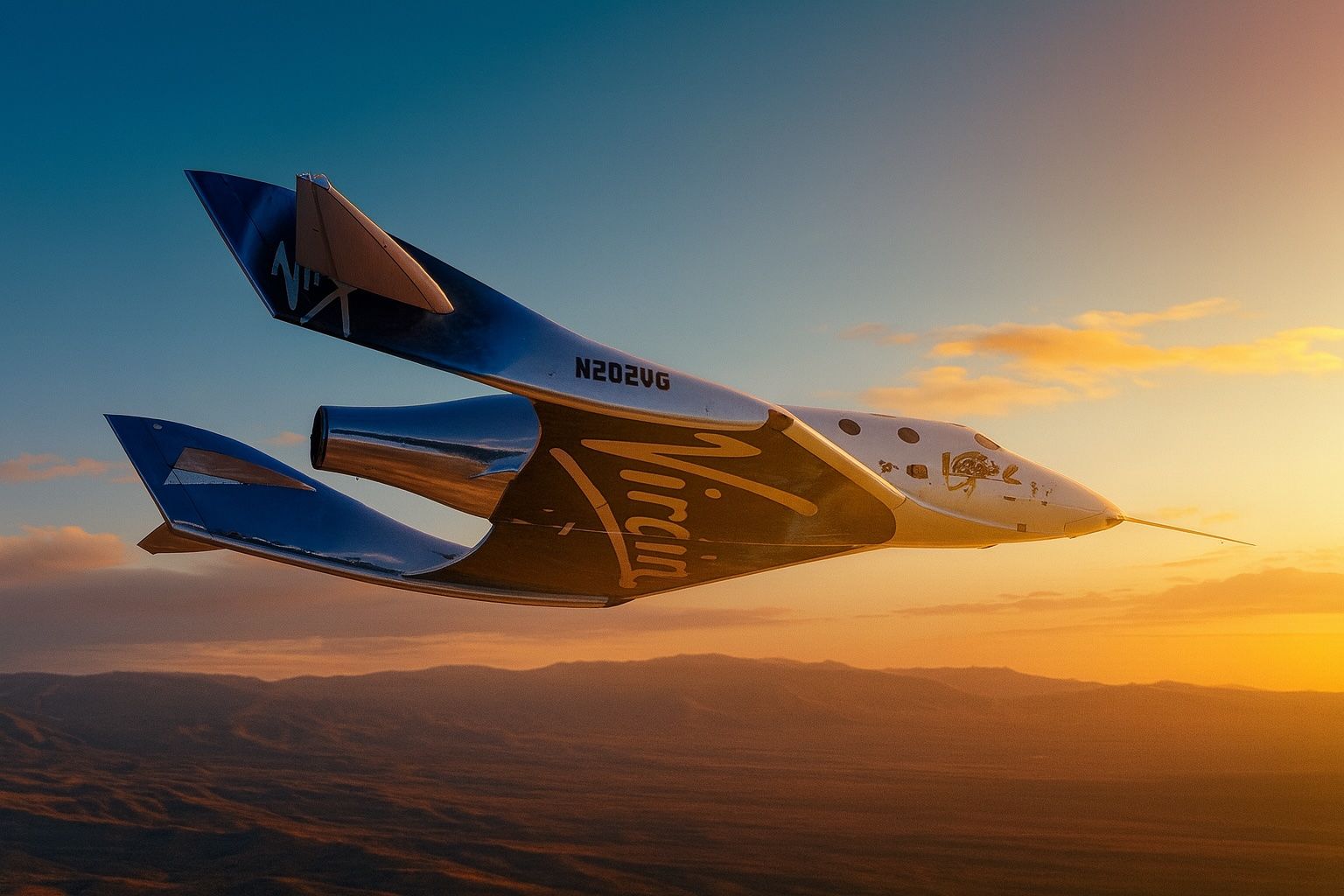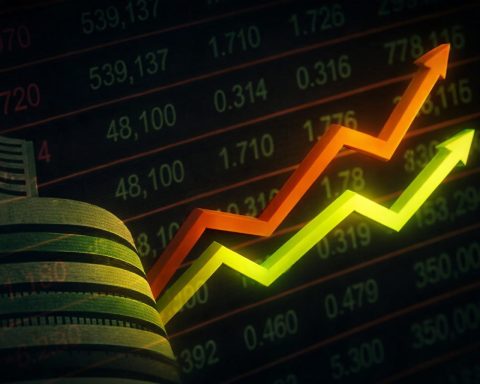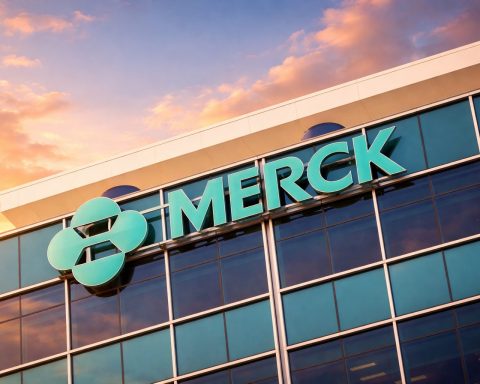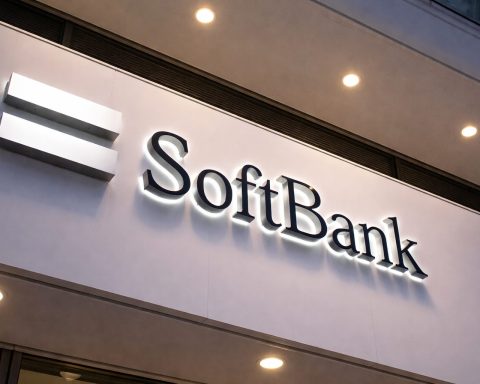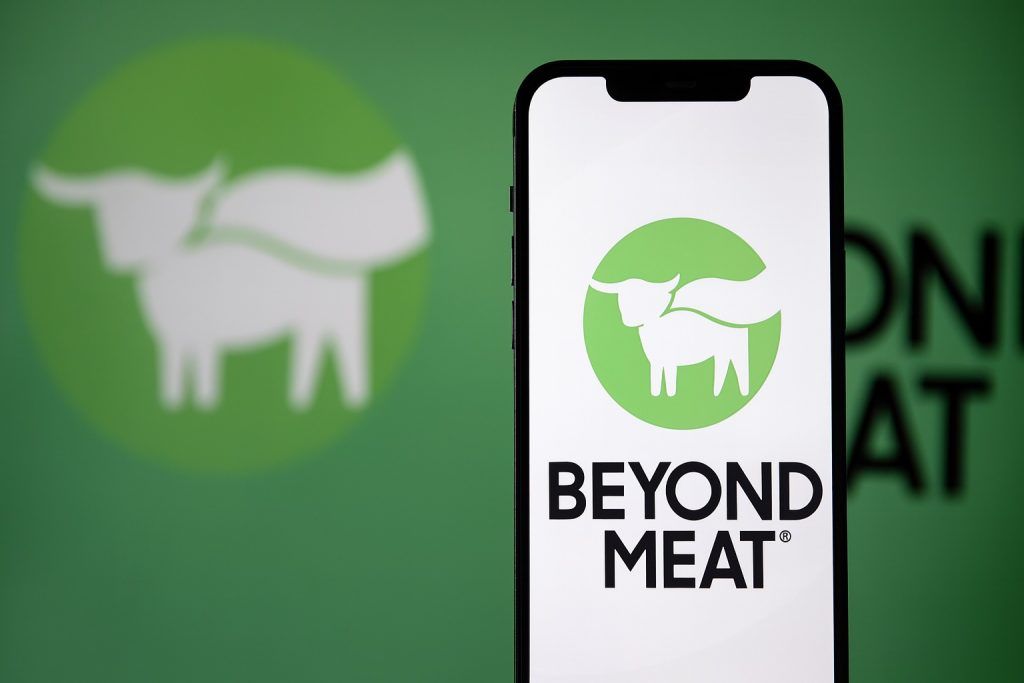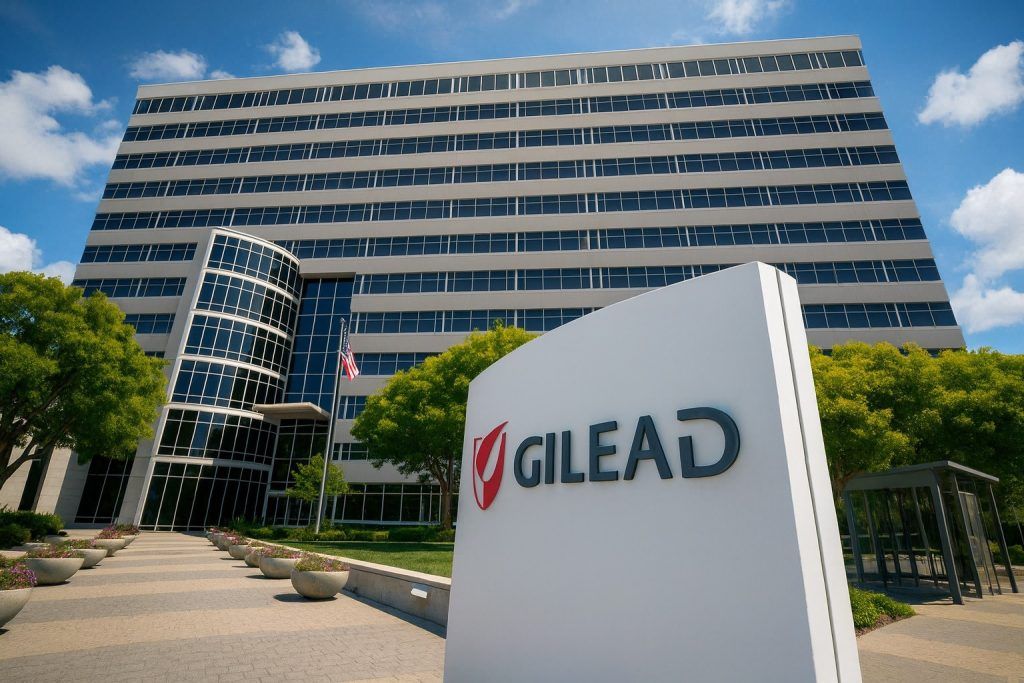Key Facts – October 18, 2025
- Stock rollercoaster: Virgin Galactic (NYSE: SPCE) shares surged from about $3.42 at the start of October to $4.89 by Oct. 16 amid upbeat news [1]. However, profit-taking kicked in – SPCE tumbled nearly 8% on Friday, Oct. 17 to close around $4.08 [2]. Despite this volatility, the stock remains down ~33% in 2025 and sits far below its peak valuations (it has lost ~99% of its value from all-time highs) [3].
- Legal overhang lifted: In mid-September, Virgin Galactic settled a long-running shareholder class-action lawsuit (over alleged nondisclosure of spacecraft safety issues) for roughly $2.9 million (mostly covered by insurance) [4]. The resolution removed a “headline risk” that had been clouding the stock [5] and was seen as a positive step to restore investor confidence.
- New “Purdue 1” space mission: This past week, Virgin Galactic announced a collaboration with Purdue University on a 2027 suborbital research flight dubbed “Purdue 1.” The mission will carry an all-Purdue crew (a professor, graduate student, and alumni) on a SpaceShipTwo flight to conduct microgravity experiments, marking the first-ever university-crewed spaceflight – a milestone hailed as a “global event” in academic space research [6]. Virgin’s president Mike Moses called the mission “a powerful demonstration” of the scientific potential of suborbital space access [7].
- Bleeding cash, but a runway remains: Virgin Galactic is still pre-revenue and deeply unprofitable. In Q2 2025 it generated only $0.4 million in revenue against a $67 million net loss [8]. Free cash flow for the quarter was –$114 million, and the company ended June with ~$508 million in cash on hand [9] after issuing new shares. With a cash burn of about $100–125 million per quarter, Virgin has roughly 1.5 years of runway left (absent new funding) to execute its plan [10]. Its next earnings report (Q3 2025) is due on November 5, 2025 [11], when investors will scrutinize any changes to the burn rate or guidance.
- Cautious Wall Street outlook: Most analysts remain neutral on SPCE. The consensus rating is Hold, with 12-month price targets averaging in the ~$4–5 range [12]. Some bearish analysts have slashed targets to $2 or below (e.g. Bernstein to $2.00, Morgan Stanley to $2.50) citing the company’s cash burn and repeated delays [13]. Even bullish forecasts are tempered – while one outlier sees a “blue sky” scenario of ~$36, others estimate fair value under $1 [14]. In short, projections vary wildly, reflecting uncertainty about Virgin Galactic’s ability to eventually turn space tourism into a profitable enterprise.
- Space tourism momentum and competition: Virgin Galactic completed its 7th commercial spaceflight (12th overall) in late September, maintaining a roughly monthly launch cadence [15]. The company plans one more mission in 2025 before pausing flights for maintenance and to focus on its next-gen “Delta class” spaceplanes (targeting commercial service by late 2026) [16] [17]. Jeff Bezos’s Blue Origin, Virgin’s chief suborbital rival, has also resumed operations – on Oct. 8, Blue Origin’s New Shepard rocket flew its 15th crewed tourist flight, sending six passengers just past the Kármán line [18]. Together, the two firms are finally making suborbital space tourism a reality after years of delays, effectively alternating launches in a nascent market that “finally seems to be finding its footing” [19].
SPCE Stock Surge and Pullback
After languishing near multi-year lows, Virgin Galactic’s stock staged a sharp rally in the first half of October 2025 – only to whipsaw investors with a sudden reversal. The initial catalyst was a flurry of positive news (detailed below) that sent speculative traders rushing in. SPCE climbed over 40% in two weeks, from about $3.42 on Oct. 1 to $4.89 by Oct. 16 [20]. On Oct. 16 alone, the stock jumped ~6%, reflecting renewed optimism. This burst of space-tourism hype lifted SPCE off its recent lows (though it remained well under early 2024 levels) [21].
However, by that Friday the gravity of profit-taking took hold. SPCE plunged 7.9% on Oct. 17 to ~$4.08 at the close [22], erasing a portion of its gains. The pullback followed three consecutive down days as traders who rode the rally locked in profits. Notably, trading was turbulent – shares swung in an 11% intraday range on the 17th (from $4.02 to $4.48) amid heavy volume [23]. Such wild swings underscore Virgin Galactic’s volatility: the stock carries a high beta (~2.2) and often overshoots in both directions. Even after recent moves, SPCE is still down roughly one-third year-to-date 2025 and has dramatically underperformed the market. In fact, from its euphoric 2021 highs (when space tourism fever peaked), SPCE has lost about 99% of its value [24], a staggering collapse that highlights the boom-bust nature of this speculative stock.
What drove the latest boom was a sense that Virgin Galactic may finally be getting its house in order – clearing legal uncertainties and showcasing real missions. But as the bust showed, skepticism runs high. Short sellers remain entrenched (more than 20% of SPCE’s float is sold short [25]), creating fuel for sudden spikes and selloffs. “There’s no shortage of skeptics” betting against Virgin Galactic’s lofty story, as one analysis noted [26]. This dynamic helps explain why SPCE can rocket upward on good news (a short squeeze effect) and then just as swiftly come back to earth when that news is fully digested. For investors, the recent rollercoaster is a reminder that Virgin Galactic’s stock tends to trade more on sentiment and headlines than fundamentals – and those headlines have been a mix of encouraging and cautionary in recent days.
Legal Win Removes a Cloud, “Purdue 1” Adds Buzz
Two developments in mid-October gave Virgin Galactic a much-needed credibility boost. First, the company quietly put to rest a major lawsuit that had been hanging over it for years. The class-action suit alleged that Virgin Galactic failed to disclose important engineering flaws and accounting issues around the time it went public. Rather than risk a protracted court battle, Virgin agreed to settle in September for approximately $2.9 million (with insurance covering most of the payout) [27]. While not an admission of wrongdoing, the settlement effectively cleared the air on this issue. It covers investors who bought SPCE from July 2019 through August 2022, addressing their claims of being misled. More importantly for current shareholders, the resolution removes a distracting overhang. One commentator noted the deal is seen as removing a “headline risk,” potentially improving sentiment toward the company [28]. In other words, a big uncertainty – which had cast doubt on management – is now off the table. Alongside the settlement, Virgin Galactic’s board also adopted some governance reforms (updating its bylaws and shareholder voting rules) to modernize the company’s corporate structure [29]. Taken together, these actions were intended to rebuild trust. As space industry site Edgen.tech summarized, Virgin Galactic has “taken steps to stabilize its outlook” [30] by resolving legal distractions and shoring up leadership credibility.
Virgin Galactic’s SpaceShipTwo suborbital spaceplane during a test flight. In the same week, Virgin Galactic unveiled a headline-grabbing initiative that plays to its strengths in science and education. The company announced a partnership with Purdue University to launch an all-Purdue crew on a research mission to suborbital space in 2027 [31]. Dubbed “Purdue 1,” the flight will carry five members with ties to the university – including a Purdue aerospace professor (Steven Collicott), a graduate student, and several alumni – on a SpaceShipTwo vehicle. Once above the atmosphere, they plan to conduct experiments in microgravity, such as fluid dynamics research that can only be done in weightlessness. Purdue’s press release emphasized this will be the first-ever space mission crewed entirely by a single university, calling it “a global event” for academic spaceflight [32]. Virgin Galactic’s President Mike Moses underscored the significance, saying “this mission…is a powerful demonstration of what becomes possible when research institutions gain direct access to the microgravity environment” [33].
For Virgin Galactic, Purdue 1 is more than just a PR win – it showcases a viable use-case for its services beyond tourism. Selling suborbital flights for research and education purposes could open a new revenue stream (universities and governments may fund such missions) while also lending the company an aura of legitimacy. The announcement garnered positive attention in both the space industry and mainstream press. It suggests that Virgin Galactic is positioning itself not just as a joyride provider for the ultra-wealthy, but also as a platform for scientific discovery. Investors welcomed this pivot: news of the Purdue partnership contributed to the mid-October rally in SPCE shares. It provided a feel-good story that Virgin can point to as proof of real customer demand (Purdue is paying for seats) and societal value. Combined with the legal settlement, the Purdue 1 mission helped flip the narrative around Virgin Galactic – at least temporarily – from one of continual setbacks to one of forward-looking momentum.
Financial Reality: High Burn Rate and Limited Cash
Excitement about space missions aside, Virgin Galactic’s financials remain a serious concern. The company is essentially pre-revenue – it has begun flying paying customers, but at a very low rate and high cost. In the second quarter of 2025, Virgin Galactic posted revenue of only about $406,000 [34] (coming from a small number of research flight tickets and related services). That revenue actually declined from the prior year, as the company had paused some commercial flights earlier to upgrade its systems. Meanwhile, expenses are enormous: the Q2 net loss was $67.3 million [35] (–$1.47 per share). In short, Virgin Galactic spent roughly 165 times more cash than it brought in during the quarter. On an operating basis, the company burned about $114 million of cash in just that three-month period [36].
The only thing keeping Virgin afloat is a cushion of cash raised from investors. As of June 30, 2025, the company reported about $508 million in cash and marketable securities on its balance sheet [37]. That war chest was bolstered by a $56 million at-the-market stock offering earlier in the year, diluting existing shareholders but bringing in much-needed funds [38]. At the current burn rate of ~$100–125 million per quarter, Virgin Galactic has roughly 18 months of cash runway left [39]. In other words, if it continues spending at the present pace, the money runs out around the end of 2026. Not coincidentally, late 2026 is when management hopes to have its next-generation spacecraft in service (which they believe will start generating meaningful revenue). The company has explicitly acknowledged it will likely need to raise more capital to bridge that gap – potentially up to $300 million more through additional stock sales [40]. Such funding would dilute shareholders further, but may be unavoidable if commercial operations don’t ramp up quickly.
Virgin Galactic’s upcoming Q3 2025 earnings report (scheduled for November 5) will be a key checkpoint [41]. Investors will look for any signs of progress in reducing the cash burn or increasing ticket sales. Given that the company only flies at most one mission per month right now (with at most 4 passengers), quarterly revenue is likely to remain under $1 million for now – a rounding error relative to costs. Management’s commentary on the conference call will thus matter more than the backward-looking numbers. Wall Street will want updates on development of the Delta-class spaceplanes, the timeline for scaling up flights, and how the company plans to fund itself until then. Any hint of delay or a need for emergency financing could send SPCE stock reeling, while signs of staying on schedule (or better-than-expected cash conservation) could stabilize investor nerves.
It’s worth noting that Virgin Galactic has been resourceful in raising cash so far. In addition to issuing stock, it has kept capital expenditures relatively lean by aerospace standards (Q2 capex was $58 million [42], as it outsourced some manufacturing). The company also ended Q2 with lower operating expenses (down ~34% year-on-year) due to restructuring and cost cuts [43]. Those efforts show management is trying to tighten the belt. But the fundamental problem remains: spaceplanes are expensive, and until Virgin Galactic can fly them frequently with paying customers, the business will run at a heavy loss. All told, the company has accumulated nearly $2 billion in deficit since its founding [44] – a figure that highlights how much has been invested for so little revenue in return. The hope is that this changes once the new fleet comes online. The risk is that the timeline slips further or demand doesn’t materialize as expected, forcing Virgin Galactic to continually tap the equity markets (diluting shareholders) just to survive.
Wall Street’s Take: Skepticism Mixed with Hope
Given Virgin Galactic’s financial challenges, it’s no surprise that many on Wall Street are cautious. According to Nasdaq and MarketBeat data, the consensus rating on SPCE is currently Hold/Neutral [45]. In practical terms, that means analysts aren’t advising buying the stock, but they’re not all-out bearish enough to recommend selling at these low levels either. The average 12-month price target across brokerage forecasts is around $4 to $5 per share [46] – roughly in line with the current price. That suggests limited upside in the eyes of most analysts, at least in the near term. For example, Susquehanna Financial reiterated a neutral stance on Oct. 9 with a $4.00 target [47]. MarketBeat’s tracking shows a similar median target near $5, with 1 analyst rating SPCE a Buy, 2 Holds, and 1 Sell.
Several high-profile firms have grown more bearish following Virgin’s recent earnings. Bernstein dramatically cut its target from $3 to $2 (underperform rating) after Q2, citing the ongoing cash bleed and the long wait until meaningful revenue [48]. Morgan Stanley likewise downgraded SPCE to underweight with a $2.50 target [49]. These firms essentially believe Virgin Galactic may be worth only a couple dollars a share (or less) unless it can drastically change its trajectory. On the flip side, there are a few optimistic voices. Bulls point out that Virgin Galactic has a backlog of around 750 customer reservations for its flights and trades at a low price-to-book ratio [50] – signs that the stock might be undervalued if the company delivers on growth. Some outlier price targets reflect this optionality: the most optimistic forecast on record is a speculative $36 (from an earlier Goldman Sachs note) [51], envisioning Virgin Galactic as a dominant player in a thriving space tourism industry years down the line. Conversely, the most pessimistic forecast has been around $0.75 (Wells Fargo) [52], implying potential bankruptcy or massive dilution. Such an extreme range underscores that SPCE’s future is highly uncertain – it could skyrocket if dreams materialize, or fizzle out if the challenges prove insurmountable.
The divergent opinions are mirrored in investor sentiment on the ground. Short sellers remain plentiful – by late September, roughly Twenty to thirty percent of available SPCE shares were sold short [53], indicating many traders are betting on the stock falling. This heavy short interest has a double-edged effect: it reflects skepticism, but also creates the potential for short-covering rallies if positive news hits. Indeed, SPCE’s ~14% one-day jump on Sept. 23 was attributed to a burst of speculative buying and shorts scrambling to cover positions [54]. That day, Virgin Galactic was “trending on social media and financial forums” as one of the market’s top gainers [55] – showing how retail hype can amplify moves. The company’s small float and high volatility make it a favorite of momentum traders looking for a quick pop. However, the presence of these traders can cut both ways; just as they pile in on good news, they can flee en masse on disappointments, exacerbating drops. As Finimize noted, even after the recent bounce, SPCE’s substantial short interest indicates “no shortage of skeptics” remaining [56].
Moving forward, sentiment around Virgin Galactic will likely hinge on concrete milestones. One catalyst on the horizon is the Q3 earnings call in early November – any updates on flight schedules or the new spacecraft development will be parsed carefully. Additionally, news about ticket sales (for instance, if the company were to reopen reservations or report more customer deposits) could sway opinions. Right now, many institutional investors have stayed on the sidelines or exited positions [57], given the stock’s poor performance and dilutive capital raises. SPCE’s shareholder base thus skews toward retail investors and speculators who are more willing to tolerate risk. For those believers, Virgin Galactic represents a “binary bet” – if space tourism takes off, the payoff could be huge, but if not, the stock could keep sinking. It’s a classic high-risk, high-reward scenario. As one Wall Street analyst bluntly put it, Virgin Galactic’s path is still “a severe cash burn and uncertain path to profitability” [58]. Until that path becomes clearer, expect the market’s love-hate relationship with SPCE to continue.
Space Tourism Race: One Small Step or One Giant Leap?
Beyond the stock gyrations and quarterly numbers, the bigger picture for Virgin Galactic is whether it can establish a viable space tourism business in the coming years. Here the company is in a sprint (or perhaps more of a marathon) with a few key competitors, all trying to prove that there is a sustainable market for taking humans to the edge of space and back. The good news is that 2025 has seen real progress on this front. Virgin Galactic itself has now flown seven commercial missions – all since mid-2023 – safely taking paying customers (or research crews) to suborbital space and returning them to Earth [59]. After years of delays and test flights, the company is finally operating in a routine, if infrequent, cadence: roughly one flight per month was achieved through late summer 2025. Its most recent flight, in late September, carried three research passengers and was noted as Virgin’s 12th spaceflight overall (including test flights) [60]. These missions, branded with names like “Galactic 01” through “Galactic 07”, have validated that Virgin’s current SpaceShipTwo vehicle (VSS Unity) can perform as intended. Customers have gotten their few minutes of weightlessness and Earth vistas, and demand – at least from adventurers and researchers – appears to be there.
However, Virgin Galactic’s current capabilities are quite limited. SpaceShipTwo can carry at most six people (including two pilots) per flight and requires a lengthy turnaround time between missions. To significantly scale up, the company is developing the next-generation “Delta class” spaceplanes – a fleet of improved vehicles designed for faster turnaround and higher throughput. The Delta class ships are expected to carry more passengers (perhaps 6+ plus two crew) and fly more frequently (potentially weekly). Virgin Galactic is targeting late 2026 to debut the first Delta vehicle in commercial service [61]. In a recent update, management outlined an ambitious revenue model once two Delta ships are operational: around 125 flights per year total, with each flight generating ~$600,000 per seat in ticket revenue (significantly higher than earlier ticket prices), which would equate to roughly $450 million in annual revenue [62]. For context, that’s about 1,000 times the company’s current yearly revenue – illustrating both the promise and the enormous gap between now and that goal. Achieving this will require not just building the Delta fleet on time, but also an uptick in demand at premium prices. Virgin has around 750 reservations on its waitlist (at ~$250k–$450k per seat from earlier ticket windows), and it eventually plans to charge even more for the enhanced experience. The hope is that if suborbital space tourism becomes trendy and proven safe, the wealthy will line up to pay six figures for a few minutes in space, much like they did for early orbital tourism trips.
Virgin Galactic is not alone in this market. Blue Origin, the private space firm founded by Amazon’s Jeff Bezos, is the other major player in suborbital tourism. Blue Origin’s New Shepard rocket and capsule system achieved a milestone in October 2025 by completing its 15th crewed flight to space, nicknamed the “Space Nomads” mission [63]. That launch (NS-36, in Blue’s numbering) carried six passengers – including entrepreneurs and a “mystery” customer revealed afterward – on a 10-minute journey past the Kármán line (~100 km altitude) and back [64] [65]. Blue Origin’s model is slightly different: it’s an automated vertical rocket (no pilots on board), and it offers a few minutes of microgravity similar to Virgin’s flight profile. After a hiatus in 2022–2023 due to a booster issue, Blue Origin has now resumed regular service, effectively alternating with Virgin Galactic. In fact, industry watchers note that Virgin and Blue have been trading off in 2025 – when one company flies one month, the other often flies the next – ensuring there’s been at least one civilian suborbital launch every few weeks. This friendly rivalry is helping to legitimize the suborbital tourism industry. “Blue Origin and Virgin are effectively alternating in a nascent suborbital market that finally seems to be finding its footing,” TechStock² observed earlier this month [66]. The competition is also spurring improvements: both companies are working on next-gen vehicles (Blue’s reusable New Shepard is already quite efficient, and it’s also developing a bigger rocket New Glenn for orbital flight). For customers, more players could mean better experiences and potentially lower prices long-term; for now, though, a ticket to space remains extremely exclusive.
It’s also worth noting that SpaceX, while not a direct competitor in suborbital hops, looms in the broader space tourism arena. Elon Musk’s company has successfully flown private citizens to orbit (e.g. the Inspiration4 mission in 2021 and upcoming dearMoon lunar trip). Those multi-day orbital adventures cost tens of millions of dollars each – a different segment than Virgin’s $0.5 million quick hops. Yet, the aspirational appeal of “space tourism” is fed by all these efforts. The more people see non-astronauts going to space – whether on a SpaceShipTwo, a New Shepard, or a SpaceX Dragon – the more credible the idea of routine space travel becomes. Virgin Galactic has the advantage of being a pure-play public company in this sector, so its stock often reacts to any news in the space tourism realm. For instance, if Blue Origin has a high-profile success or if SpaceX’s private missions draw attention, it can spark interest in SPCE as a way to invest in the theme. Conversely, any accident or mishap in the industry would be a major setback for public perception and likely Virgin’s stock as well (safety is paramount to convincing people to sign up).
Looking ahead, 2026–2027 will be critical for Virgin Galactic. By then, we will know whether the Delta class spaceships are flying and if Virgin can ramp up to a more frequent schedule. The company’s own forecasts (hundreds of millions in revenue, positive gross margin at scale) hinge on hitting those milestones [67] [68]. Achieving them could transform Virgin Galactic from a cash-burning pioneer into a lucrative “space airline” with a first-mover advantage. Failing to meet the timelines, on the other hand, could exhaust its cash and test investors’ patience beyond repair. The broader space economy context is encouraging – investment in space tech is at all-time highs, and public interest in space exploration is strong. Governments are also supporting private space ventures (NASA, for example, contracts flights for research payloads on suborbital vehicles). Virgin Galactic is trying to position itself at the nexus of tourism and research, as evidenced by programs like Purdue 1. If it can diversify its customer base (mixing thrill-seekers, researchers, educators, even defense or industry experiments), it stands a better chance of filling seats regularly.
In summary, Virgin Galactic in late 2025 finds itself at a crossroads. The excitement of finally flying paying customers and forging partnerships (like with a top university) is tempered by the reality of mounting losses and a stock that’s been beaten down. The recent legal and operational wins have bought some breathing room – they removed doubts about management and showed the world a glimpse of what Virgin can do (send ordinary folks to space). These helped fuel a short-term rally in SPCE. But sustaining any recovery will require steady follow-through: hitting development milestones, managing finances carefully, and maybe even a bit of luck in the form of a supportive market environment. As of October 18, 2025, Virgin Galactic’s journey is far from over – it’s a volatile flight, and investors are strapped in for what could be a thrilling or bumpy ride ahead. The coming months will reveal whether SPCE stock can defy gravity for good or if it will once again succumb to the unforgiving pull of reality back on Earth.
Sources: Key information and quotes were drawn from TechStock² news analyses [69] [70] [71] [72], Virgin Galactic’s financial disclosures and press releases, space industry reports (Space.com, Aviation Week) [73] [74], and market data from Yahoo Finance and Finimize [75] [76]. All facts and figures are up to date as of Oct. 18, 2025.
References
1. ts2.tech, 2. stockinvest.us, 3. ts2.tech, 4. ts2.tech, 5. ts2.tech, 6. ts2.tech, 7. ts2.tech, 8. ts2.tech, 9. ts2.tech, 10. ts2.tech, 11. ts2.tech, 12. ts2.tech, 13. ts2.tech, 14. ts2.tech, 15. ts2.tech, 16. ts2.tech, 17. ts2.tech, 18. www.space.com, 19. ts2.tech, 20. ts2.tech, 21. ts2.tech, 22. stockinvest.us, 23. stockinvest.us, 24. ts2.tech, 25. ts2.tech, 26. ts2.tech, 27. ts2.tech, 28. ts2.tech, 29. ts2.tech, 30. ts2.tech, 31. ts2.tech, 32. ts2.tech, 33. ts2.tech, 34. ts2.tech, 35. ts2.tech, 36. ts2.tech, 37. ts2.tech, 38. ts2.tech, 39. ts2.tech, 40. ts2.tech, 41. ts2.tech, 42. ts2.tech, 43. ts2.tech, 44. ts2.tech, 45. ts2.tech, 46. ts2.tech, 47. ts2.tech, 48. ts2.tech, 49. ts2.tech, 50. ts2.tech, 51. ts2.tech, 52. ts2.tech, 53. ts2.tech, 54. ts2.tech, 55. ts2.tech, 56. ts2.tech, 57. ts2.tech, 58. ts2.tech, 59. ts2.tech, 60. ts2.tech, 61. ts2.tech, 62. ts2.tech, 63. www.space.com, 64. www.space.com, 65. www.space.com, 66. ts2.tech, 67. ts2.tech, 68. ts2.tech, 69. ts2.tech, 70. ts2.tech, 71. ts2.tech, 72. ts2.tech, 73. www.space.com, 74. ts2.tech, 75. ts2.tech, 76. ts2.tech
